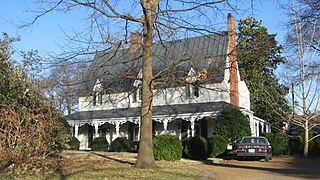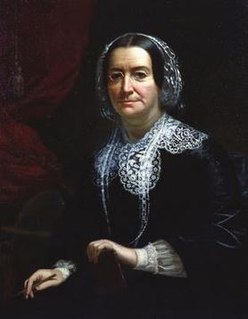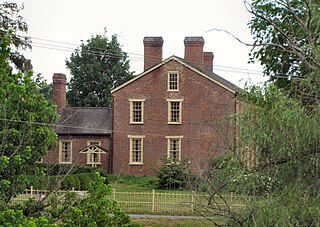
Belle Meade is a city in Davidson County, Tennessee. Its total land area is 3.1 square miles (8.0 km2), and its population was 2,912 at the time of the 2010 census.

Mount Olivet Cemetery is a 206-acre (83 ha) cemetery located in Nashville, Tennessee. It is located approximately two miles East of downtown Nashville, and adjacent to the Catholic Calvary Cemetery. It is open to the public during daylight hours.
Richard Boone Cheatham was an American politician based in Nashville, Tennessee. He was serving as the mayor of Nashville, Tennessee during the opening years of the Civil War. After the war he served as alderman of the city, and later as a representative to the State House, 1869-1871.
Edward Emmett Dougherty, a.k.a. Edwin Dougherty was an architect in the southeastern United States. One of his best known designs was the Tennessee War Memorial Auditorium in Nashville in 1922. The work won state and national design competitions.
Edward Saunders Cheatham was an American politician and businessman.

Henry Hamilton Love was a Nashville lumberman and sportswriter. Known as the "Daddy of the Nashville lumberman," he was the first president of the Nashville Lumberman's Club. He wrote the Hardwood Code, a telegraphic code then used extensively in the trade, and urged by the Hardwood Manufacturer's Association of the United States.

The Southern Methodist Publishing House is a historic building in Nashville, Tennessee, USA.

For the English bowler, see William Charles Smith.

The Home for Aged Masons, formerly known as the Masonic Widows' and Orphans' Home and the Middle Tennessee Tuberculosis Hospital, is a historic building in Nashville, Tennessee, USA.

Glen Oak is a historic mansion in Nashville, Tennessee, U.S..

Julia A. Tevis was a pioneer educator of women from Kentucky. After teaching for several years in Virginia, she founded the Science Hill Female Academy in Shelbyville and led the institution to gain a national reputation for excellence. Teaching her students math and science, rather than how to be accomplished seamstresses, Tevis prepared young women for colleges.
Colonel Edmund William Cole was an American Confederate veteran and businessman. He was the president of the Nashville, Chattanooga and St. Louis Railway, and the founder of the American National Bank.
Henry Gibel was a Swiss-born American architect. He designed many buildings in Tennessee, some of which are listed on the National Register of Historic Places.
Donald W. Southgate (1887–1953) was an American architect. He designed many buildings in Davidson County, Tennessee, especially Nashville and Belle Meade, some of which are listed on the National Register of Historic Places.
Edwin Augustus Keeble was an American architect who was trained in the Beaux-Arts architecture tradition. He designed many buildings in Tennessee, including homes, churches, military installations, skyscrapers, hospitals and school buildings, some of which are listed on the National Register of Historic Places. He is best known for Nashville's landmark Life and Casualty Tower built in 1957 which was the tallest commercial structure in the Southeastern United States at that time. It reflected an architectural turn to modernism and was one of the first buildings emphasizing energy efficiency.

Rock Jolly is a historic house near Cross Plains, Tennessee, U.S..
Vernon K. Stevenson was an American businessman. He served as the president of the Nashville and Chattanooga Railway for 25 years, and as the president of the Southern Pacific Railroad. He was a real estate investor in Manhattan, New York City.

The Thomas Telford House is a historic house near Limestone, Tennessee, U.S..

The Landsberger-Gerhardt House, also known as the Fite-Anderson House, is a historic house in Murfreesboro, Tennessee, U.S.. It was built in the Antebellum era for a merchant. It is listed on the National register of Historic Places.

The Moye Boarding House is a historic building in Portland, Tennessee. It was built in 1878–1892 for A.C. Butt or Kate Moye on land formerly owned by Thomas Buntin. It was a boarding house on the Louisville & Nashville Railroad from 1890 to 1945. It was acquired by the city of Portland in 2011, and it received $15,000 from the Tennessee Historical Commission and the Historic Preservation Fund to be restored in 2016. The building was designed in the Folk Victorian architectural style. It has been listed on the National Register of Historic Places since March 27, 2013.










